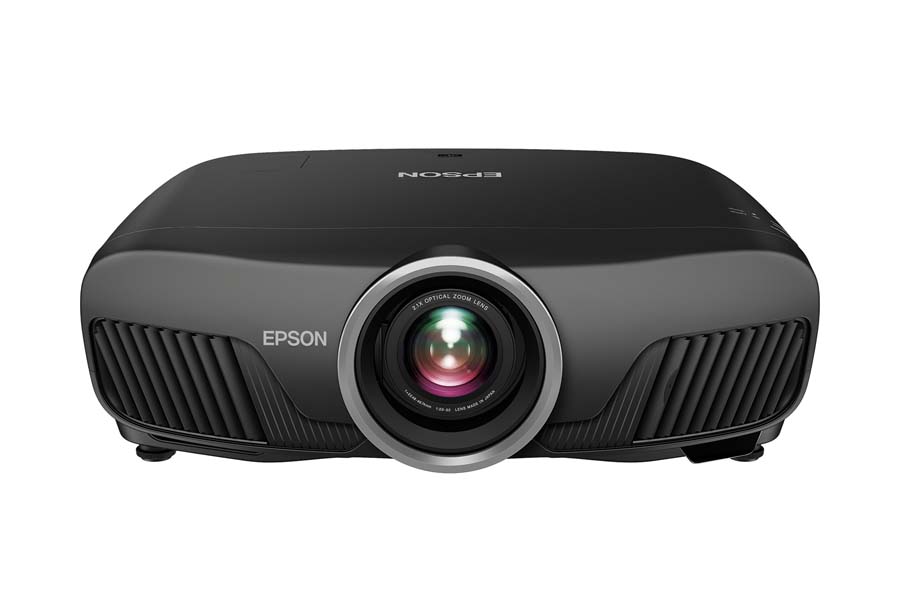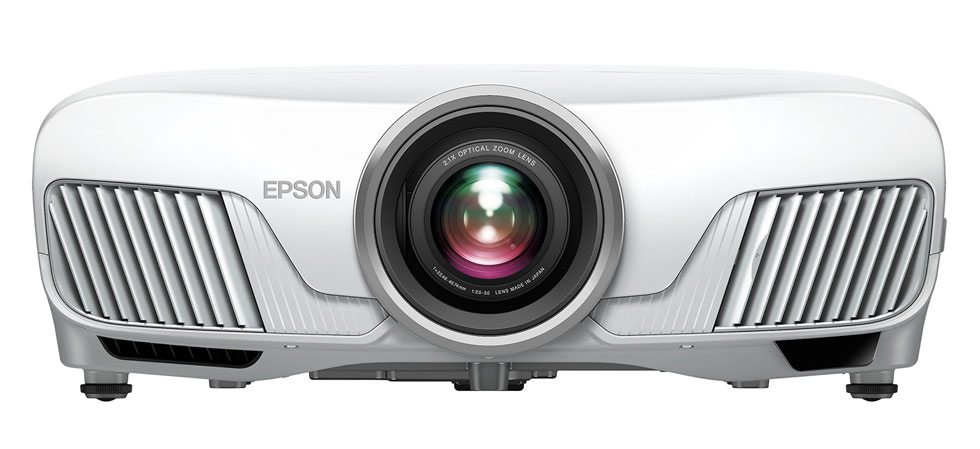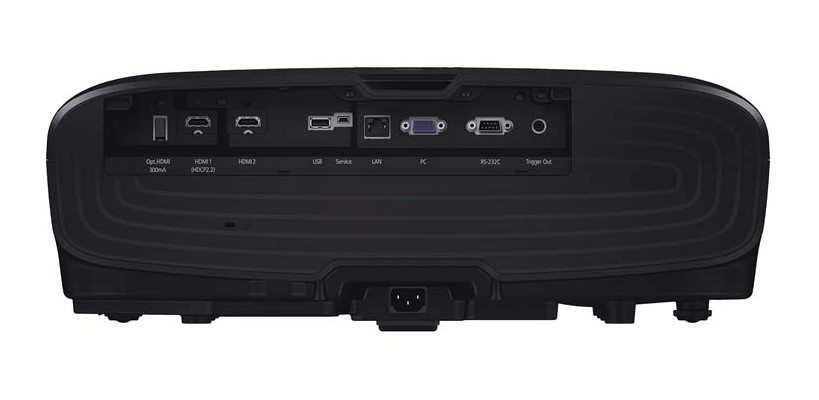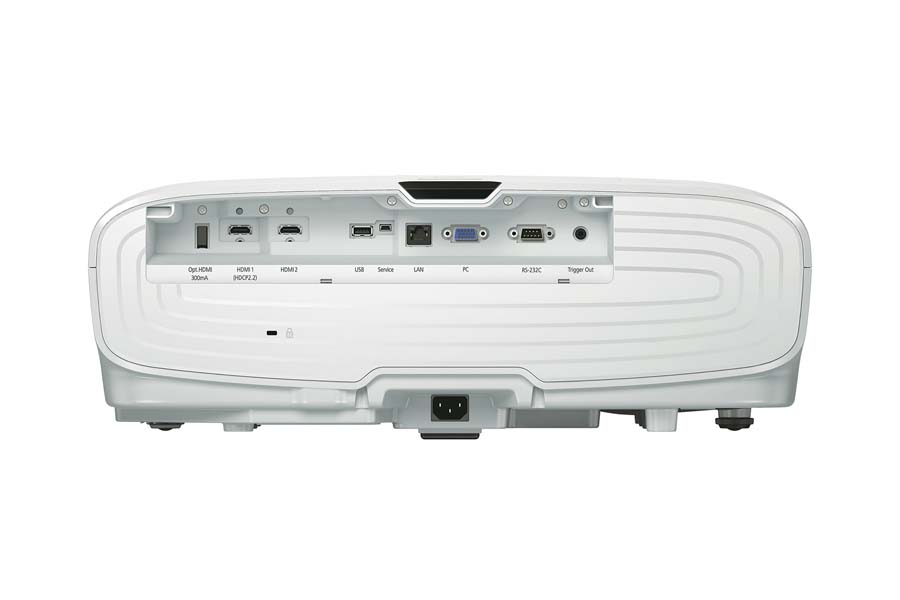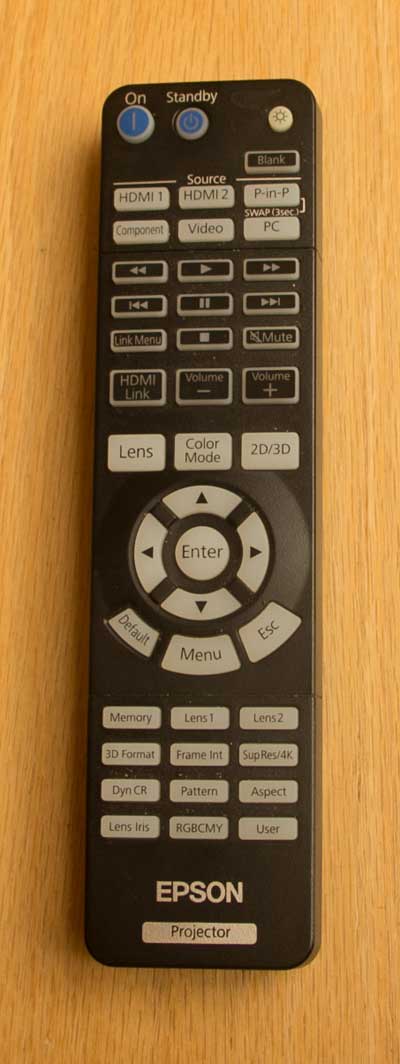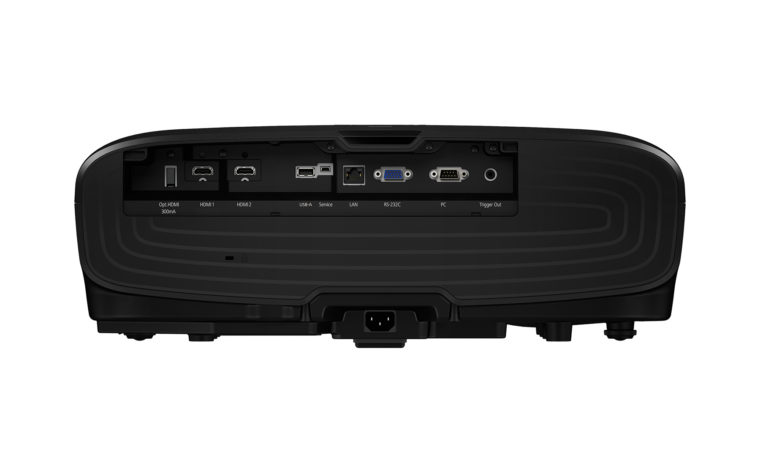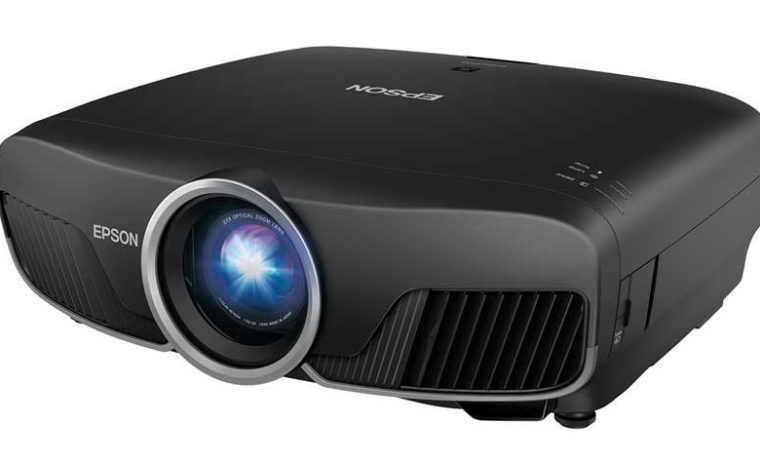The Epson Pro Cinema 6050UB (PC6050UB) mostly “looks and cooks” like the older 40UB projectors. Externally, hardware wise, there are no real differences compared to either the older HC5040UB, PC6040UB or the new lower end HC4010/PC4050. The PC5050UB has a black chasis. which distinguishes it from the HC5050UB"s white cabinet (and dark vents).
The primary invisible difference between the two, to look at the 50UB series, is the lens. Yes, it is the same 2.1:1 motorized zoom lens, but Epson, of course quality controls the lens. It is shared by four projectors the two UBs and the HC4010/PC4050.
The difference, per Epson, is that Epson pulls the best of the lenses (via QCing them), and saves them for the Pro Cinema 6050UB. I don't have a breakdown of how many PC6050UB's Epson sells compared to the other three models combined, but it is the most expensive. I would guess that something like 10% to 20% of the lenses are needed for the 6050UB. I have no idea how much visible difference in clarity there is between the best and the worst of the lenses out of all of them, but, there should be a slight visible difference between the "average 6050UB" and the average 5050UB. Of course if a 5050UB gets one of the best lenses from the total batch, that aren't pulled for the 6050UB, and you compare that to a PC6050UB that got one of the worst of the ones set aside as best lenses, then, obviously, the difference is not going to be visible.
In our hardware tour, we’ll start with the front of the projector. Centered in the front of the Epson PC6050UB is the 2.1:1 motorized zoom lens, slightly recessed into the case. A mechanical lens cover automatically opens when powered on, and closes when powered off, to protect the lens from dust and damage. Epson says it continues to have minor improvements done to both the lens and the light path, from generation to generation.
Facing the projector, the hot air exhaust vent is found on the left side of the lens and the cool room air intake is found on right side of the lens - while they stand out on the white case of the Home Cinema model, The vents are not near as noticeable on the black Pro Cinema 6050UB. The front of the unit also houses the IR (infra-red) sensor for the remote control. The front corners offer a pair of adjustable, screw-type feet for better positioning if shelf mounted – but as most of you will likely be favoring a ceiling mount, there are the usual threaded holes for accepting universal ceiling mounting hardware.
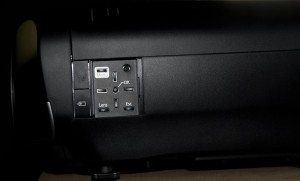
Epson Control panel on Epson 40UB and 50UB series and 4010/4050 projectors. Power and Input on the side. The rest behind the sliding door.
The projector’s right side is featureless, while the left side houses a small, mostly concealed control panel. The rear of the projector is where we find all the inputs and connectors this projector has to offer. The top is where we find three indicator lights for Status, Lamp and Temperature, as well as an access door for lamp changes, and a second IR sensor at the back top.

